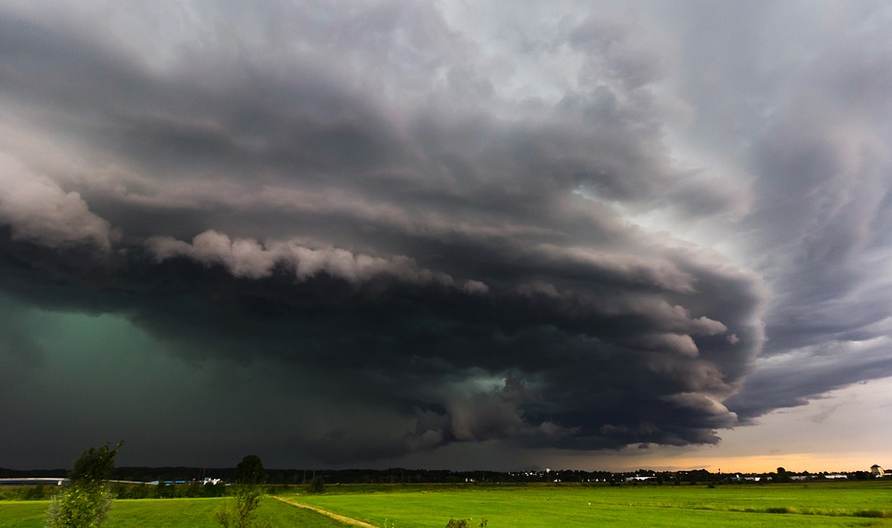Canadian provinces impacted by severe Derecho line of storms

Southern parts of the Canadian provinces of Ontario and Quebec have been hit by a line of severe thunderstorms, in a Derecho type event that has caused widespread and relatively significant damage across the region.
The storms struck on Saturday and at one point almost a million homes were left without power as the Derecho system rolled through the region.
Seven people were reported dead due to falling trees, while another death was reported after a boat capsizing incident.
Wind gusts of more than hurricane strength were recorded, with recordings made up to 132 km/h.
Hydro One, a power company operating in Ontario, said that severe thunderstorms caused significant damage to its electricty infrastructure, with hundreds of broken poles, several downed transmission towers, fallen trees and broken limbs as well as many downed power lines across its operating area.
“The storm has caused extensive damage across the province and we anticipate it will take multiple days to restore power to all customers. We know life grinds to a halt without electricity and we have mobilized every available resource to restore power as quickly and safely as possible for our customers,” said Jason Fitzsimmons, Chief Corporate Affairs and Customer Care Officer. “We appreciate everyone’s patience as we work to restore power as quickly as possible.”
Prime Minister Justin Trudeau had tweeted, “The storms that swept across Ontario and Quebec yesterday caused serious damage, claimed several lives, and left many without power.”
The line of severe storms spanned roughly 621 miles (1,000km), and meteorologists said it constituted a rare derecho event.
Derechos are formed when a line of severe thunderstorms races across a country usually during the summer months and can cause severe winds at the frontal line, as well as tornadoes, hail, rainfall and other impacts.
At this early stage there aren’t any industry loss estimates available, but sources suggest the eventual toll will easily run into the hundreds of millions of Canadian dollars, with the damage perhaps widespread and severe enough to cause a billion dollar event.
Meaning, at this stage, it’s impossible to know whether this catastrophe loss will be largely contained in the primary insurance industry, or whether it will spill over to international reinsurance markets as well.






